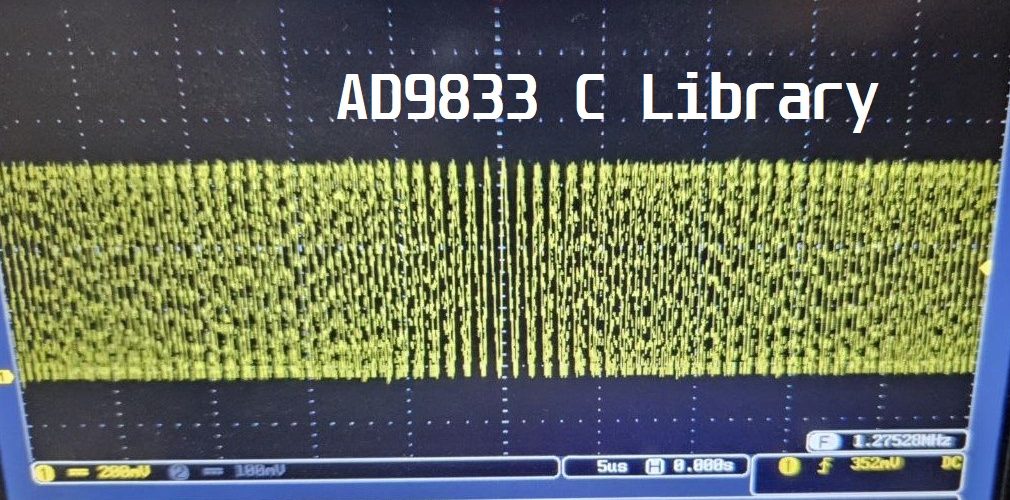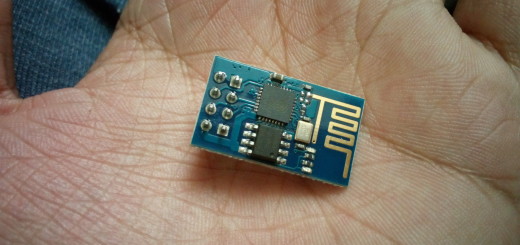Easy to use AD9833 C Library

Hey there, fellow electronics enthusiasts! If you’ve ever tinkered with the signal generation, you’ve likely come across the AD9833 waveform generator chip. But did you know that this little gem can do so much more than just waveforms? For example, you could use this as an FSK beacon transmitter, a low-frequency local oscillator for your HF receiver or even as a precision frequency generator in the low-frequency range. Additionally, you can generate sine waves, triangle waves and square waves. Of course, you would need a good low-pass filter to generate a good sine wave with low harmonic distortion. I wrote a quick C library that can be used in your project with minimum effort. In this blog post, we’ll explore the library’s versatile features and show you how it can supercharge your signal projects.
Features of the AD9833 Library
Let’s dive into the AD9833 Library:
- Frequency and Phase Control: Say goodbye to signal headaches! The AD9833 Library allows you to effortlessly set the frequency and phase of your AD9833 chip. With functions like
AD9833_setFrequency()andAD9833_setPhase(), you have full control over your signal’s characteristics. Whether you’re creating a local oscillator, an HF beacon, or an FSK transmitter, precise frequency and phase control is at your fingertips. - Flexible Configuration: Need to fine-tune your signal output? No problem! The library offers easy configuration options for various AD9833 settings. With functions like AD9833_outputMode() and AD9833_setConfig(), you can effortlessly adjust the output mode, sleep mode, reset behaviour, and more. Whatever your project demands, the AD9833 Library has you covered.
- Seamless Frequency Sweeping: Ready to sweep through a range of frequencies? The AD9833 Library makes it a breeze! Use the
AD9833_sweep()function to sweep from a start frequency to a stop frequency smoothly. Define the number of steps and set the dwell time between each step. Whether you’re testing frequency response or creating captivating sound effects, frequency sweeping has never been easier.
Getting Started with the AD9833 Library
Ready to kick-start your signal adventures with the AD9833 Library? Here’s a quick guide to get you up and running:
- Installation: Start by cloning the AD9833 Library repository from GitHub. Then, simply copy the
AD9833.candAD9833.hfiles into your project directory. Easy as pie! - Initialization: Open up your source file and include the
AD9833.hheader. Initialize the AD9833 chip using theAD9833_init()function with your SPI handle. The library takes care of the setup, so you can focus on unleashing your creativity. - Frequency and Phase Control: It’s time to work your signal magic! Use the
AD9833_setFrequency()function to set the desired frequency value. Likewise, employAD9833_setPhase()to control the phase of your signal. Whatever application you have in mind, these functions will help you hit the right notes. - Configuring the Output: Fine-tune your signal output like a pro! With functions such as
AD9833_outputMode()andAD9833_setConfig(), you can easily adjust the output mode and other AD9833 settings. Get ready to tailor your signal to match your project requirements. - Frequency Sweeping: Take your signals on a captivating journey! Utilize the
AD9833_sweep()function to create mesmerizing frequency sweeps. Define the start and stop frequencies, set the number of steps, and specify the dwell time between each step. Prepare to be amazed by the dynamic range of your signal projects.
Contributing and License
We love collaboration! If you’re bursting with ideas, suggestions, or even some coding wizardry, I’d love to hear from you. Feel free to contribute by reporting issues, making suggestions, or submitting those awesome pull requests. Together, we can make the AD9833 Library even more powerful.
Oh, and here’s the icing on the cake—the AD9833 Library is released under the permissive MIT License. That means you’re free to use it in both personal and commercial projects. Check out the details in the repository’s LICENSE file.
Conclusion
The signal generation just got a whole lot more exciting with the AD9833 Library. From local oscillators to HF beacons, FSK transmitters, and beyond, this library brings versatility to the palm of your hand.
Ready to dive in? Head over to the GitHub repository and unlock the full potential of the AD9833 chip. Get ready to unleash your signal creativity and embark on captivating projects. Happy exploring!
Click this link for AD9913 DDS module.
This article was written with assistance from ChatGPT because why not!




Voice of the people